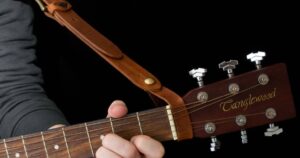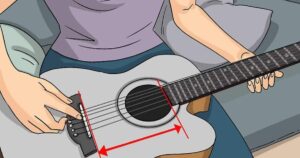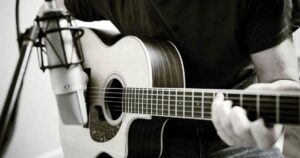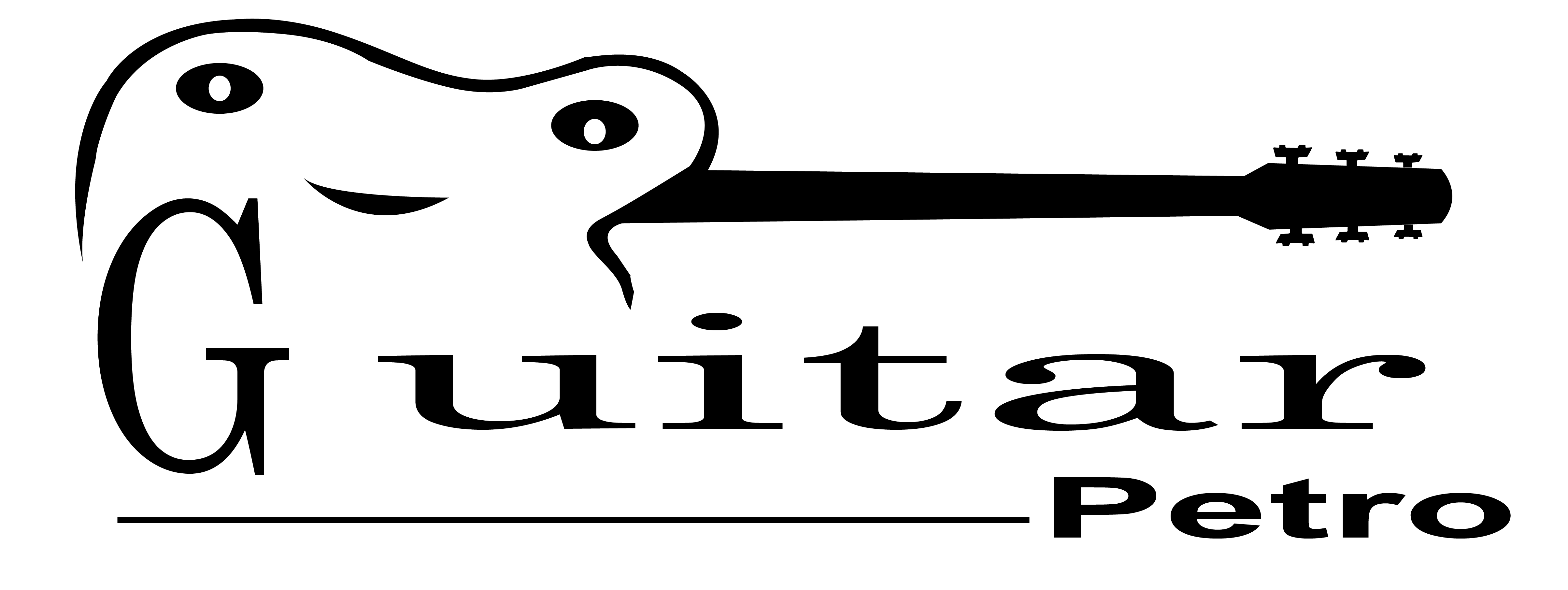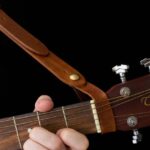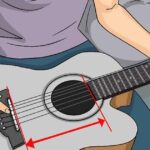Amplifying an acoustic guitar means using a pickup or microphone to make the guitar’s sound louder. To do this, you can attach a pickup to the guitar or use a microphone near it. Connect the pickup or microphone to an amplifier, which makes the sound louder. Adjust the settings on the amplifier to get the desired sound. This way, you can play your acoustic guitar at higher volumes for performances or recording.
Do you want to make your acoustic guitar’s beautiful melodies heard by a larger audience? Amplifying an acoustic guitar is the secret to turning its soft, soothing tones into a powerful, captivating sound. Whether you’re performing on a stage, recording in a studio, or just want to jam with friends, we’ll show you the simple steps to bring your acoustic guitar’s music to life, louder and clearer than ever before.
Amplifying an acoustic guitar opens a world of musical possibilities. To begin, you can choose between two primary methods: using a pickup or a microphone. Once you’ve made your choice, the process involves connecting the pickup or microphone to an amplifier. This amplifier serves as the powerhouse, allowing you to adjust sound settings and volume levels, ultimately transforming your acoustic guitar’s gentle strums into a resounding performance.
Understanding the Basics
Before we dive into the various methods and equipment for amplifying an acoustic guitar, it’s essential to understand the basics of how sound works and how an acoustic guitar, such as the Oldest Existing Acoustic Guitar, produces its unique tones. This knowledge will help you make informed decisions when it comes to amplification.
The Acoustic Guitar’s Sound Production
An acoustic guitar generates sound through the vibration of its strings. When you pluck a string, it creates vibrations that are transferred to the guitar’s soundboard (the top part of the guitar). The soundboard amplifies these vibrations and produces the guitar’s acoustic sound. Understanding this process is crucial because it affects how you should amplify the instrument.
Types of Acoustic Guitars
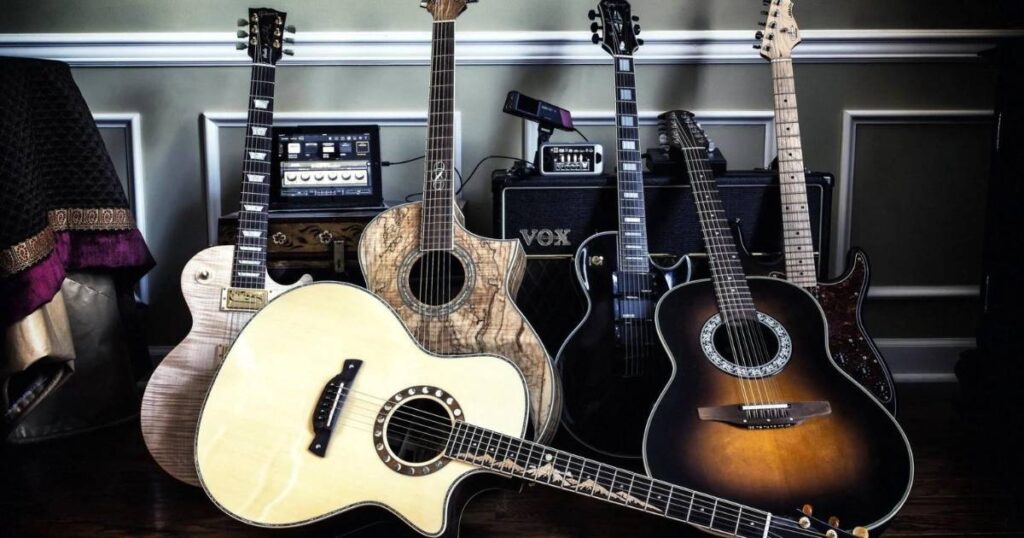
There are several types of acoustic guitars, including steel-string, classical, and flamenco guitars. Each type has distinct tonal qualities, and the choice of amplification method can vary depending on the type of guitar you’re using.
Acoustic vs. Electric Guitars
While electric guitars have built-in pickups designed for easy amplification, acoustic guitars require external equipment for effective amplification. This is due to the difference in sound production between the two types of guitars.
Comparison of Acoustic Guitar Amplification Methods.
| Amplification Method | Pros | Cons |
| Microphone | – Captures natural sound | – Susceptible to feedback |
| – Offers tonal flexibility | – Requires careful placement | |
| – Great for studio recording | ||
| Soundhole Pickup | – Easy installation | – May lack tonal depth |
| – Minimal alteration to guitar | – Less natural sound compared to mic | |
| Under-Saddle Pickup | – Clean and natural sound | – Installation may require professional help |
| – Preferred for live performances | – Sensitive to EQ adjustments | |
| Contact Pickup | – Versatile placement options | – May produce inconsistent sound |
| – Can capture percussive elements | – Requires experimentation for best results | |
| Internal Microphone | – Provides warm and natural tone | – Installation can be invasive |
| – Less susceptible to feedback | – Might pick up internal guitar handling | |
| Dual Pickup Systems | – Offers tonal variety and blending options | – Requires more setup and adjustments |
| – Combines different pickup benefits | – Costlier compared to single pickups |
Microphone Amplification
Microphones are a classic choice for amplifying acoustic guitars. They capture the natural sound of the instrument and can be used in various settings, from live performances to studio recording. Here’s how to effectively use microphones to amplify your acoustic guitar:
Microphone Types
Choosing the right microphone is crucial for achieving the desired sound. There are two primary types of microphones for acoustic guitar amplification:
1. Condenser Microphones
Condenser microphones are known for their sensitivity and accuracy. They are often the preferred choice for capturing the nuances of an acoustic guitar’s sound. There are two common condenser microphone designs:
Small Diaphragm Condenser Microphones
Small diaphragm condenser microphones are excellent for capturing the guitar’s intricate details. They provide a transparent and uncolored sound, making them ideal for acoustic guitar recording.
Large Diaphragm Condenser Microphones
Large diaphragm condenser microphones offer a warmer and fuller sound. They are suitable for adding character to the guitar’s tone, making them popular for live performances.
2. Dynamic Microphones
Dynamic microphones are known for their durability and ability to handle high sound pressure levels. They may not capture the subtle nuances of an acoustic guitar as well as condenser microphones, but they can be a good choice for certain situations, such as live shows with high-volume levels.
Microphone Placement
Proper microphone placement is essential to capture the best acoustic guitar sound. Experiment with the following microphone placement techniques:
1. Pointing at the 12th Fret
Placing the microphone near the 12th fret of the guitar can yield a balanced sound with a mix of warm lows and crisp highs. This is a common placement for capturing the guitar’s natural tone.
2. Pointing at the Soundhole
Positioning the microphone near the soundhole will result in a bass-heavy sound. It can be a good choice if you want to emphasize the low frequencies of your acoustic guitar.
3. XY or ORTF Stereo Miking
For a more spacious and three-dimensional sound, you can use two microphones in an XY or ORTF stereo configuration. This method captures a wider stereo image of the guitar’s sound.
4. Blend Microphone Types
Mixing different microphone types (e.g., small diaphragm condenser and dynamic) can provide a balanced and unique sound by combining their respective strengths.
Room Acoustics
Consider the acoustic properties of the room in which you’re recording or performing. The room’s size, shape, and materials can greatly influence the sound of the guitar. Experiment with microphone placement and room position to find the best sound for your acoustic guitar.
Acoustic Guitar Pickup Systems
Apart from microphones, pickup systems are a popular choice for amplifying acoustic guitars, especially in live settings. These systems are built into or attached to the guitar and capture the vibrations directly from the strings or soundboard. Here are some common pickup systems:
Soundhole Pickups
Soundhole pickups are easy to install and do not require any permanent modifications to your guitar. They are typically mounted in the soundhole and use magnetic or piezoelectric technology to capture the guitar’s sound. These pickups are a convenient choice for gigging musicians.
Under-Saddle Pickups
Under-saddle pickups are installed beneath the saddle of the guitar and utilize piezoelectric crystals to detect string vibrations. They offer a clean and natural sound, making them a popular choice for acoustic-electric guitars.
Contact Pickups
Contact pickups are attached directly to the guitar’s soundboard. They capture vibrations and translate them into an electrical signal. Contact pickups can be placed in various locations on the guitar, providing flexibility in tone shaping.
Internal Microphone Pickups
Internal microphone pickups are placed inside the guitar body. They capture the instrument’s sound from within and can provide a warm and natural tone. These pickups are often used in combination with other pickup systems for a well-rounded sound.
Dual Pickup Systems
Some acoustic guitars come equipped with dual pickup systems that combine two different pickup types, such as a soundhole pickup and an under-saddle pickup. This allows you to blend and shape your sound to your liking.
Preamps and EQ
Preamps and EQ (Equalization) are essential components in the signal chain of your amplified acoustic guitar. They allow you to fine-tune your sound, control feedback, and match the guitar’s tonal qualities to the venue or musical style. Here’s how to use preamps and EQ effectively:
External Preamps
Many pickup systems come with built-in preamps. However, you can also use external preamps to further shape your sound. These preamps often include features like gain control, EQ settings, and notch filters to handle feedback.
Equalization (EQ)
EQ allows you to adjust the balance of different frequency ranges in your guitar’s sound. Here’s a basic guide to using EQ:
Low Frequencies (Bass)
- Boost: Adds warmth and depth to your sound.
- Cut: Reduces boominess or muddiness.
Mid Frequencies
- Boost: Adds presence and clarity to your sound.
- Cut: Reduces nasal or boxy qualities.
High Frequencies (Treble)
- Boost: Adds brightness and sparkle to your sound.
- Cut: Reduces sharpness or sibilance.
Notch Filters
- Use notch filters to eliminate specific feedback frequencies.
Feedback Control
Feedback can be a challenge when amplifying acoustic guitars. To control feedback:
Monitor Your Stage Volume
- Keep stage monitors at an appropriate volume to reduce the risk of feedback.
Position Your Monitor Speakers
- Adjust monitor speaker placement to minimize the risk of feedback.
Use Feedback Suppressors
- Feedback suppressors are devices that automatically detect and eliminate feedback frequencies.
D. Experiment with Your Sound
Remember that the ideal sound varies depending on your playing style, the genre of music, and the acoustics of the venue. Take the time to experiment with your preamp settings and EQ to find the perfect sound for your acoustic guitar.
Sound Reinforcement Techniques
Amplifying an acoustic guitar in a live performance setting involves more than just the guitar and amplification equipment. It also requires a good understanding of sound reinforcement techniques to ensure that your guitar sound reaches the audience effectively.
PA Systems
A PA (Public Address) system is a crucial component for live sound reinforcement. It consists of speakers, amplifiers, and a mixing console. Here are some considerations when using a PA system for your amplified acoustic guitar:
1. Speaker Placement
- Position your main speakers to ensure even sound coverage throughout the venue.
2. Monitor Mix
- Create a separate monitor mix for yourself and other band members to hear your guitar and vocals clearly on stage.
3. Soundcheck
- Perform a thorough soundcheck before the show to ensure that your guitar sound is balanced and free from feedback.
DI Boxes
DI (Direct Input) boxes are used to connect your guitar to the PA system. They convert the unbalanced signal from your guitar into a balanced signal suitable for long cable runs. This can help maintain the integrity of your guitar sound and reduce interference.
Stage Microphone
In addition to miking your guitar, consider using a stage microphone for your vocals. This ensures that your voice is projected clearly to the audience. You can also use effects processors for vocal enhancements if desired.
Monitor Systems
Use monitor speakers or in-ear monitors to hear yourself and your bandmates clearly on stage. This helps with timing and pitch and reduces the need for loud stage volumes that can cause feedback.
Effects and Processors
If you want to add depth and creativity to your sound, consider using effects and processors. Reverb, chorus, and delay are common choices for acoustic guitar. These can be applied through your PA system or effects pedals.
Amplification for Recording
Amplifying an acoustic guitar for recording has its own set of considerations. In the studio, you have the advantage of complete control over the recording environment and can experiment with various microphone techniques and positions.
Microphone Techniques
Experiment with different microphone techniques for recording, such as close miking, spaced pair miking, and room miking. Each technique produces a distinct sound and can be used to capture different aspects of your acoustic guitar’s tone.
Signal Chain
Pay close attention to your signal chain in the recording studio. Make sure your microphone(s) are connected to a high-quality preamp and interface. You can also use external EQ and effects to shape your sound before it’s recorded.
Acoustic Treatment
In the studio, you have the advantage of treating the room acoustically to achieve the desired sound. Consider using diffusers and absorbers to create the ideal acoustic environment for your acoustic guitar recording.
Overdubbing
In some cases, overdubbing (recording the guitar separately from other instruments or vocals) can be a helpful technique to achieve a clean and controlled sound. This allows you to focus on capturing the best guitar performance without interference from other elements.
Troubleshooting and Tips
Amplifying an acoustic guitar can come with its share of challenges. Here are some troubleshooting tips and general advice for getting the best results:
Avoid Overdriving
Keep an eye on the gain levels to avoid overdriving your pickups or microphones. This can lead to distorted or clipped sound, which may not be desirable.
Guitar Maintenance
Regularly maintain your guitar to ensure that it produces the best possible sound. This includes changing strings, adjusting the action, and keeping the guitar in good condition.
Feedback Management
If you encounter feedback issues, try to locate the source of the feedback frequency and adjust your EQ settings or use feedback suppressors.
Listen to Your Sound
Always take time to listen to your amplified sound from the audience’s perspective. What sounds good on stage may not necessarily sound the same to the audience. Make adjustments accordingly.
Record and Review
Recording your performances can be a valuable tool for improvement. Listen to recordings to identify areas where your amplified sound can be enhanced.
FAQs
What’s the difference between a pickup and a microphone for amplifying an acoustic guitar?
A pickup is a device that attaches to the guitar to capture sound, while a microphone records the guitar’s sound from a distance.
Do I need an amplifier to play my acoustic guitar louder?
Yes, an amplifier is essential to boost the guitar’s volume for live performances or recording.
Can I use an acoustic-electric guitar for amplification instead of a pickup or microphone?
Yes, many acoustic-electric guitars come with built-in pickups, making them convenient for amplification.
Conclusion
Amplifying an acoustic guitar is a straightforward process that can bring your music to life in a big way. By choosing between pickups and microphones, you can select the method that best suits your preferences and needs. Once you have the right equipment in place, connecting your guitar to an amplifier enables you to control the volume and shape the sound to your liking. Whether you’re a budding musician, a seasoned performer, or simply want to enjoy your acoustic guitar’s melodies at higher volumes, this amplification process opens up a world of possibilities.
Amplifying your acoustic guitar allows you to share your music with larger audiences and explore new creative horizons. It’s a valuable tool for stage performances, recording sessions, and even casual jam sessions with friends. With the right setup and a bit of practice, you can achieve a clear, resonant sound that captures the beauty of your acoustic guitar while ensuring your music reaches the ears of many. So, take the plunge, amplify your acoustic guitar, and let your melodies shine for all to hear.


